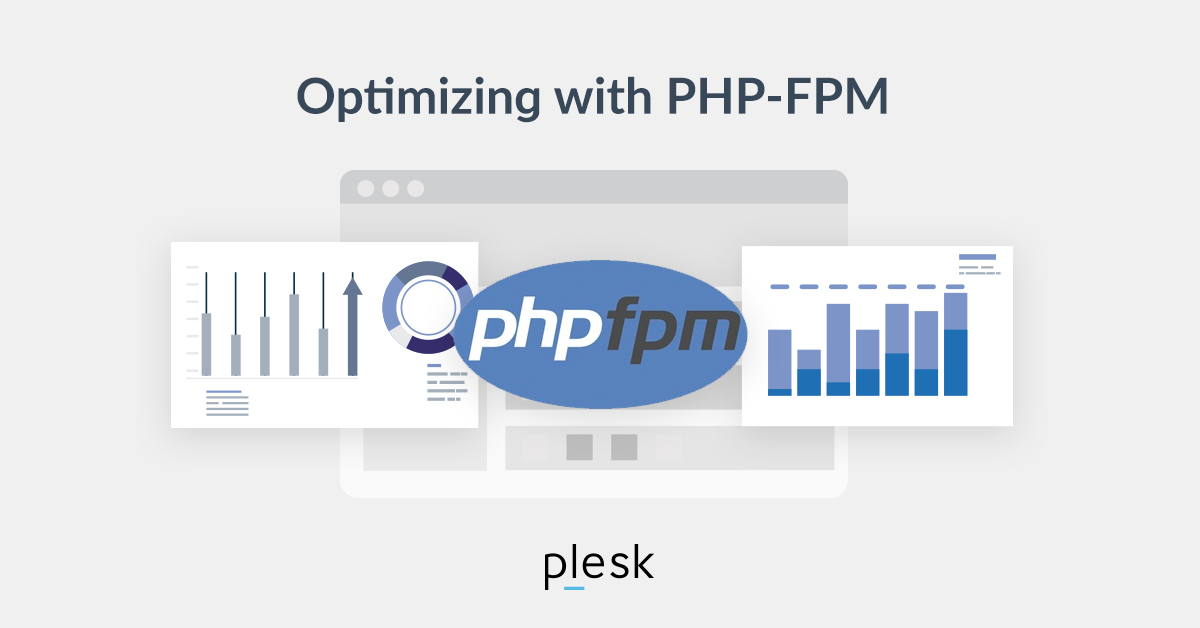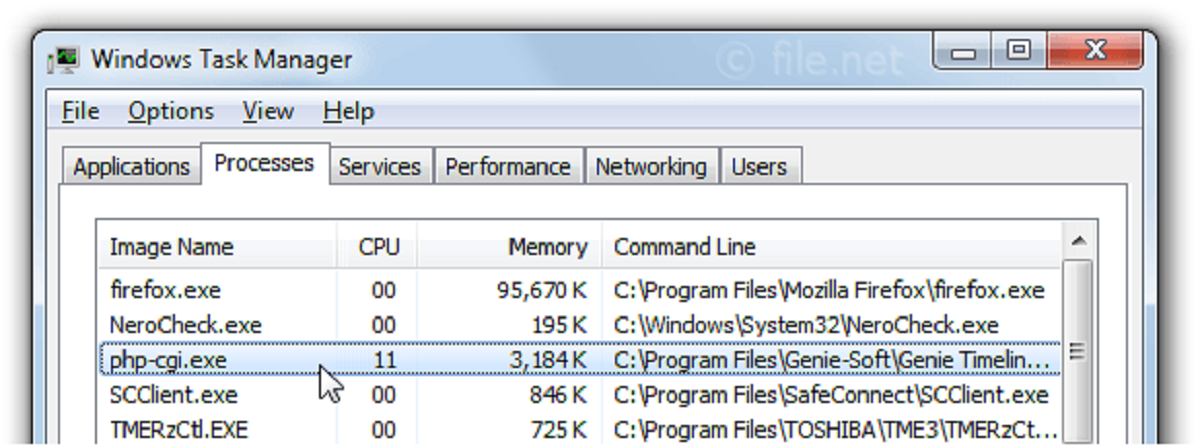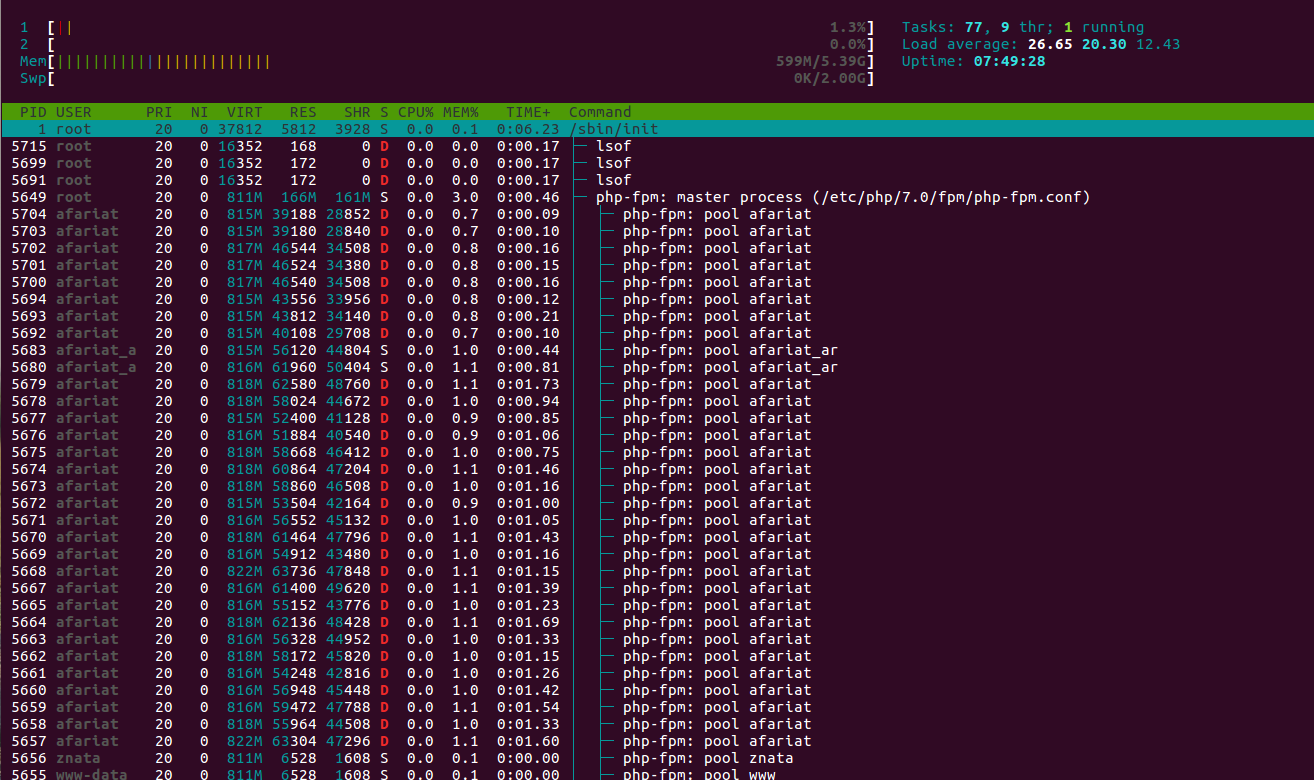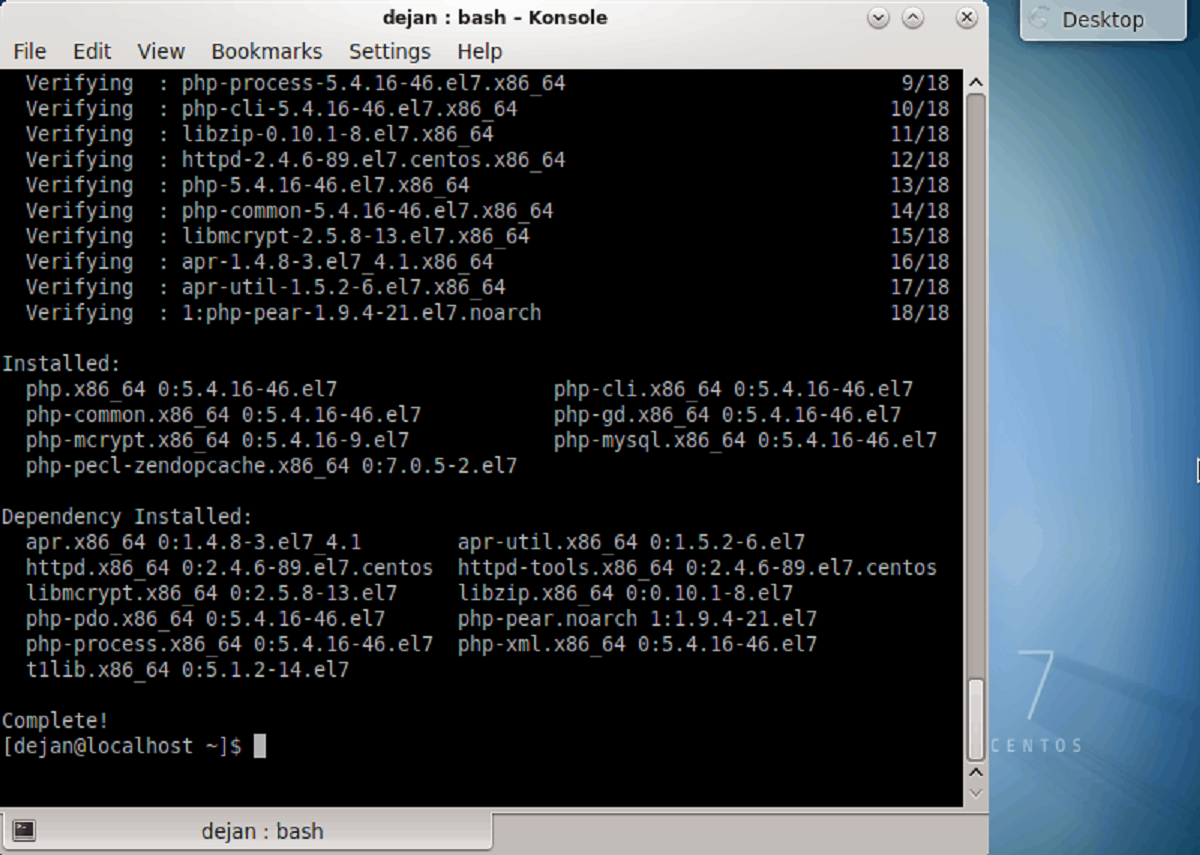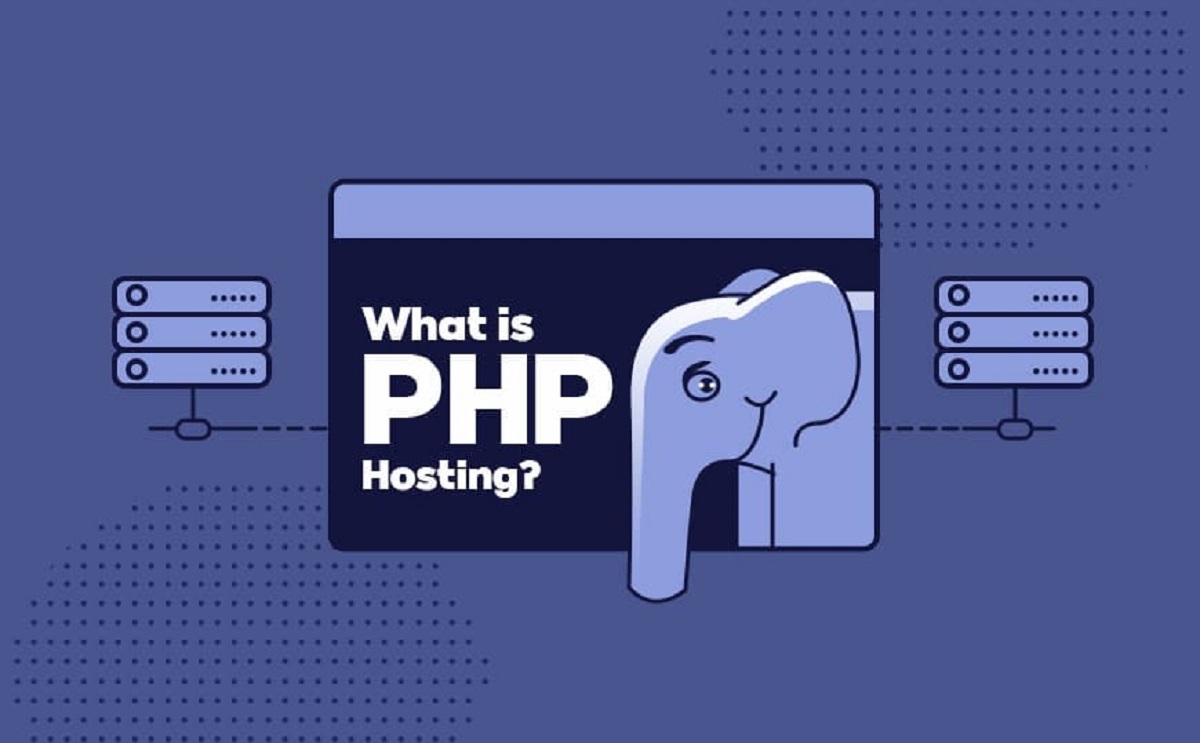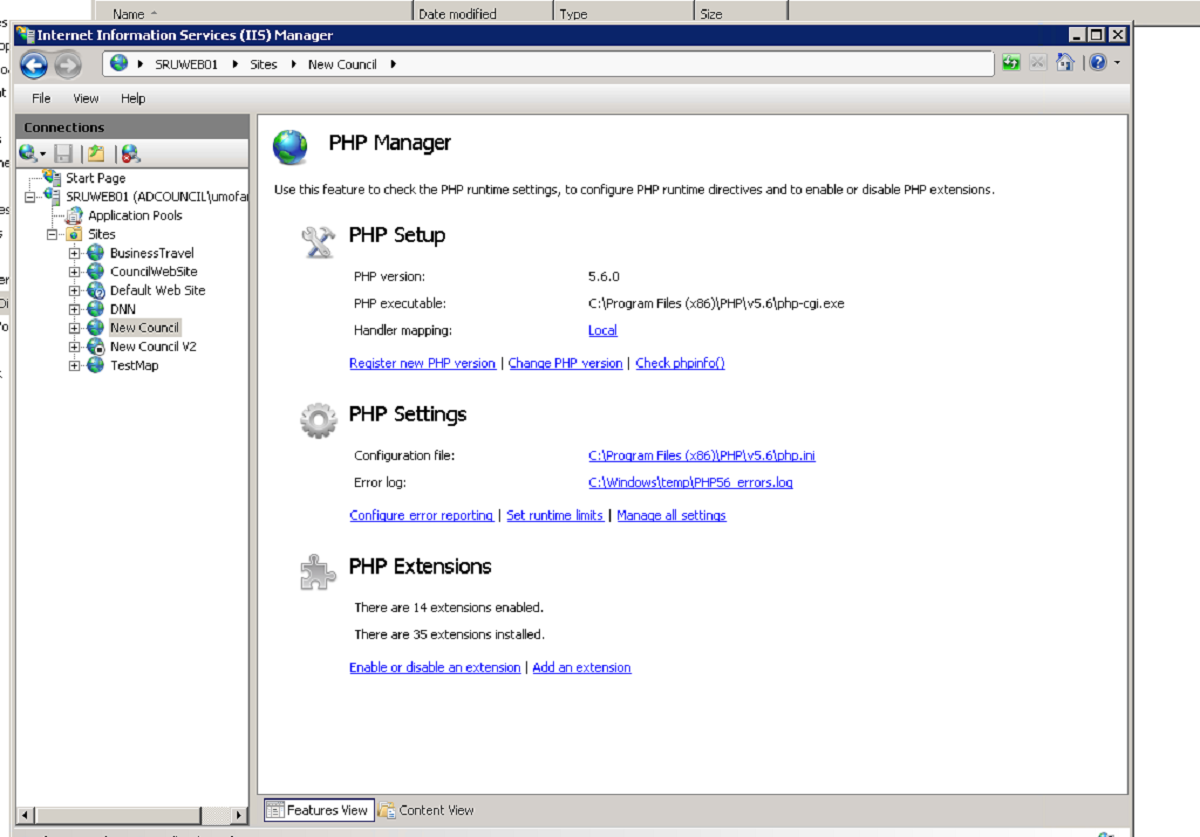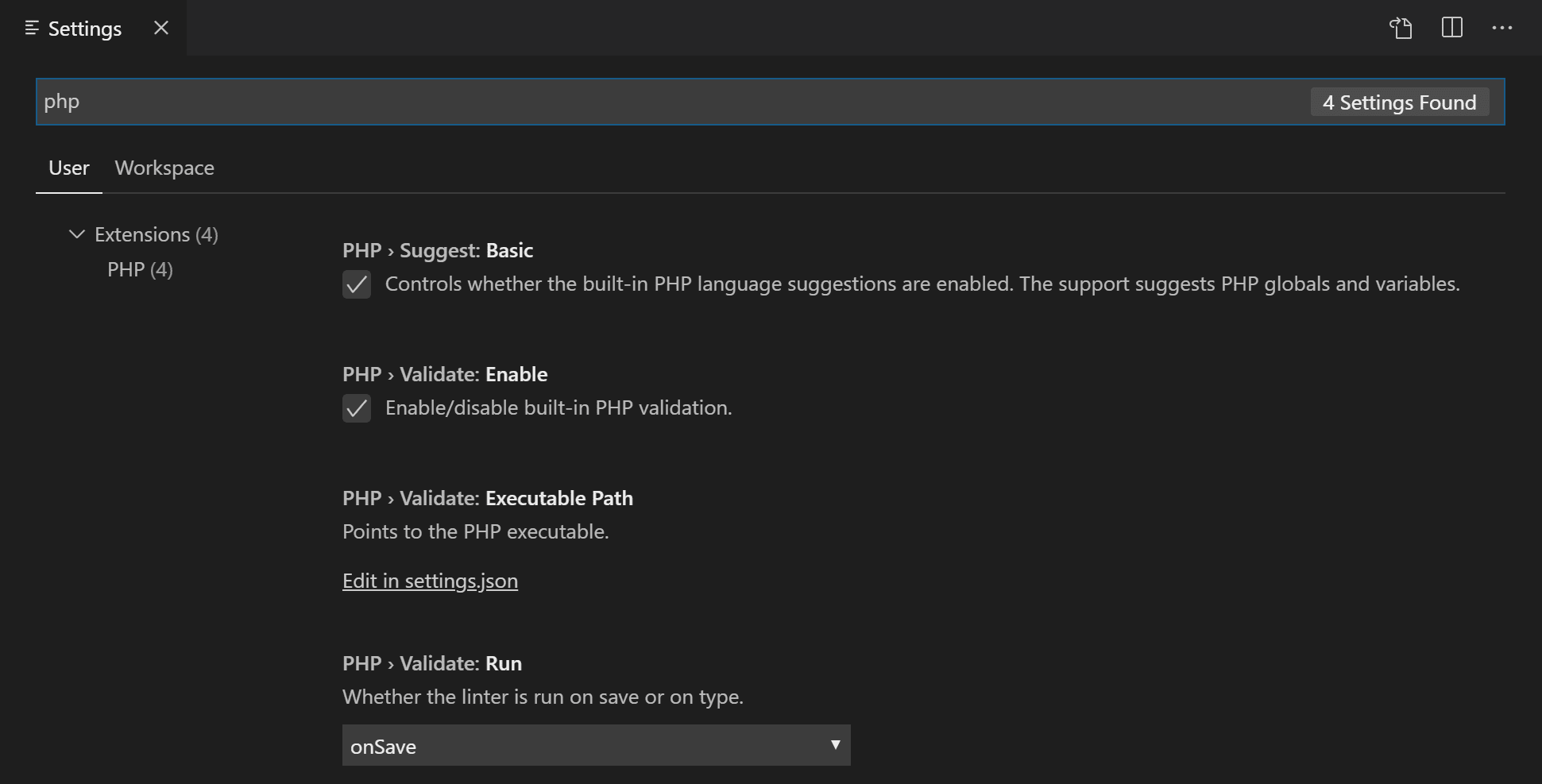Introduction
PHP-FPM, also known as PHP FastCGI Process Manager, is a highly efficient and popular alternative to the traditional CGI and FastCGI methods for executing PHP files on web servers. It offers improved performance, scalability, and resource management, making it the preferred choice for many websites and applications.
PHP-FPM is a process manager specifically designed for PHP, allowing individual PHP requests to be handled by separate processes. This approach significantly improves the ability to handle high traffic loads while minimizing resource consumption. With PHP-FPM, web servers can efficiently handle multiple concurrent PHP requests and ensure optimal performance.
One of the key benefits of PHP-FPM is its ability to effectively manage and control the processes that execute PHP code. By dynamically adjusting the number of worker processes based on the incoming traffic and server load, PHP-FPM optimizes resource usage and prevents unnecessary overloading of the server.
Moreover, PHP-FPM supports a range of advanced features and configurations, such as process prioritization, dynamic process creation and destruction, and user-defined process management. These features provide greater flexibility and control over how PHP requests are processed, enabling administrators to fine-tune the performance of their PHP applications.
In this article, we will dive deeper into PHP-FPM and explore its inner workings, benefits, and how it compares to traditional CGI/FastCGI methods. We will also discuss the installation and configuration process of PHP-FPM, as well as common troubleshooting techniques for resolving issues that may arise.
What is PHP-FPM?
PHP-FPM, which stands for PHP FastCGI Process Manager, is an alternative method of executing PHP files on web servers. It is a highly efficient and scalable solution that offers improved performance and resource management compared to traditional CGI and FastCGI methods.
At its core, PHP-FPM is a process manager specifically designed for PHP. It handles PHP requests by utilizing separate processes, allowing for better control and optimization. Rather than using a single PHP interpreter for all requests, PHP-FPM spawns multiple worker processes to handle each request individually.
This approach offers several benefits. Firstly, it allows web servers to handle high traffic loads more effectively. Each PHP request is assigned to its own process, ensuring that the workload is distributed evenly and preventing a single request from monopolizing server resources. This improves the overall performance and responsiveness of the server.
Furthermore, PHP-FPM dynamically adjusts the number of worker processes based on the incoming traffic and server load. It can automatically scale up or down the number of processes to meet the demand. This feature is especially useful during periods of high traffic, as it ensures that there are enough processes to handle requests without overloading the server.
Another advantage of PHP-FPM is the ability to prioritize and manage processes. It allows administrators to define rules and configurations for how PHP requests are handled. This level of control gives administrators the flexibility to allocate resources based on the specific needs of their PHP applications.
In summary, PHP-FPM is a powerful process manager that significantly improves the performance and scalability of PHP-based applications. By utilizing separate worker processes, it offers better resource management and allows web servers to handle high traffic loads efficiently. In the next section, we will delve deeper into how PHP-FPM works and explore its key features.
How does PHP-FPM work?
PHP-FPM operates as a standalone process manager that works in conjunction with web servers like Nginx or Apache. It provides a FastCGI interface through which PHP requests can be processed efficiently. Let’s take a closer look at how PHP-FPM works:
- Communication with the web server: PHP-FPM listens on a specific port or Unix socket for incoming PHP requests from the web server. It establishes a connection with the web server using the FastCGI protocol.
- Managing worker processes: PHP-FPM maintains a pool of worker processes that are ready to handle PHP requests. These processes can be dynamically created and destroyed based on the server’s needs. The number of processes in the pool is adjustable and can be configured to accommodate the expected traffic and available resources.
- Handling PHP requests: When a PHP request is received, the web server forwards it to PHP-FPM via the FastCGI interface. PHP-FPM assigns the request to an available worker process from the pool, ensuring that the workload is evenly distributed and that no single process becomes overwhelmed.
- Processing the PHP code: The assigned worker process takes the PHP request and executes the PHP code, generating the desired output. Each worker process runs independently, allowing multiple PHP requests to be processed concurrently without interfering with one another.
- Returning the response: Once the PHP code is executed, the worker process sends the generated output back to PHP-FPM. PHP-FPM, in turn, forwards the response to the web server using the FastCGI protocol. The web server then delivers the response to the client’s browser.
Throughout this process, PHP-FPM continuously monitors the performance and health of the worker processes. It can detect and handle various scenarios, such as process timeouts, crashes, and resource limitations. By doing so, PHP-FPM ensures the stability and reliability of PHP processing on the server.
With its intelligent process management capabilities, PHP-FPM enhances the overall performance of PHP applications. It optimizes resource usage, improves response times, and enables efficient handling of high traffic loads. In the next section, we will discuss the many benefits that PHP-FPM offers over traditional CGI and FastCGI methods.
Benefits of PHP-FPM
PHP-FPM offers a range of benefits that make it a preferred choice for executing PHP files on web servers. Let’s explore some of the key advantages of using PHP-FPM:
- Improved performance: PHP-FPM’s use of separate worker processes allows for efficient handling of PHP requests. Each request is processed independently, ensuring that one request does not impact the performance of others. This concurrency helps optimize server resources and results in improved response times for PHP applications.
- Scalability: PHP-FPM dynamically adjusts the number of worker processes based on the server load. This allows websites and applications to handle sudden spikes in traffic without degrading the overall performance. PHP-FPM can scale up or down the number of processes as needed, ensuring optimal resource utilization.
- Resource management: By managing processes on an individual basis, PHP-FPM actively monitors and optimizes resource usage. It prevents any single PHP request from monopolizing server resources, ensuring a fair distribution among all requests. This helps maintain stability and allows for smooth operation even under heavy loads.
- Enhanced process control: PHP-FPM provides administrators with granular control over how PHP requests are handled. It offers features such as process prioritization, dynamic process creation and destruction, and user-defined process management. This level of control allows administrators to fine-tune performance based on the specific requirements of their applications.
- Compatibility: PHP-FPM is compatible with a wide range of web servers, including popular options like Nginx and Apache. It integrates seamlessly into existing server setups, making it easy to adopt and configure without requiring drastic changes to the infrastructure.
- Security: PHP-FPM enhances security by isolating PHP processes from the web server. This isolation helps prevent potential attacks that exploit vulnerabilities in PHP code. Additionally, the ability to allocate individual user accounts to specific PHP processes ensures that users’ resources and data are isolated and protected.
These benefits make PHP-FPM a powerful and efficient solution for executing PHP files on web servers. Its performance improvements, scalability, resource management capabilities, and process control features contribute to the overall stability and reliability of PHP applications. In the next section, we will highlight the differences between PHP-FPM and traditional CGI/FastCGI methods.
Differences between PHP-FPM and traditional CGI/FastCGI methods
While traditional CGI (Common Gateway Interface) and FastCGI methods have been widely used for executing PHP files on web servers, PHP-FPM offers several notable differences and advantages. Let’s compare PHP-FPM with traditional CGI/FastCGI methods:
- Process Management: One of the key differences lies in how the processes are managed. In traditional CGI/FastCGI methods, a new CGI process is created for every PHP request, resulting in significant overhead and slower response times. PHP-FPM, on the other hand, utilizes a pool of worker processes that are kept alive and can handle multiple PHP requests. This approach eliminates the need to create a new process for each request, leading to improved performance and resource efficiency.
- Scalability: PHP-FPM’s ability to dynamically adjust the number of worker processes based on server load makes it more scalable compared to traditional CGI/FastCGI methods. With traditional methods, handling a sudden spike in traffic requires spawning additional CGI processes, which can be resource-intensive. PHP-FPM can handle higher traffic volumes more efficiently by scaling up the existing worker processes or creating new ones as needed, without incurring excessive overhead.
- Resource Utilization: Traditional CGI and FastCGI processes typically consume more memory due to the overhead of creating and maintaining separate processes for each PHP request. PHP-FPM, with its shared pool of worker processes, reduces memory usage and improves resource utilization. By reusing processes, PHP-FPM minimizes the memory footprint and allows for better allocation of server resources.
- Performance: PHP-FPM’s optimized process management and reduced resource consumption contribute to improved performance compared to traditional CGI/FastCGI methods. The ability to handle multiple concurrent PHP requests efficiently, combined with its resource management capabilities, results in faster response times and enhanced overall performance for PHP applications.
- Configuration Flexibility: PHP-FPM provides more flexibility in configuring and fine-tuning the performance of PHP applications. With PHP-FPM, administrators can define various settings such as the number of worker processes, process prioritization, and process termination criteria. This level of control allows for better customization and optimization of PHP application performance.
- Platform Support: While traditional CGI/FastCGI methods are supported by various web servers, PHP-FPM has gained significant popularity and is widely supported by major web servers, including Nginx and Apache. This compatibility makes it easier for administrators to incorporate PHP-FPM into their existing server setups without requiring major infrastructure changes.
Overall, PHP-FPM offers improved performance, scalability, resource management, and configuration flexibility compared to traditional CGI/FastCGI methods. Its ability to efficiently handle PHP requests and optimize resource utilization makes it a preferred choice for executing PHP files on web servers. In the following sections, we will explore how to install, configure, and troubleshoot common issues with PHP-FPM.
How to Install PHP-FPM
Installing PHP-FPM may vary depending on the operating system and web server you are using. Here, we will provide a general outline of the steps involved in installing PHP-FPM:
- Check prerequisites: Before installing PHP-FPM, ensure that you have a compatible web server, such as Nginx or Apache, already installed and running on your server. Additionally, make sure you have PHP installed, as PHP-FPM is an extension of PHP.
- Update system packages: It is a good practice to update your system packages to the latest versions before installing new software. Use the appropriate package manager for your operating system to update the packages.
- Install PHP-FPM: Use your operating system’s package manager to install PHP-FPM. For example, on a Debian-based system, you can use the following command:
sudo apt-get install php-fpm. On Red Hat-based systems, you can use:sudo dnf install php-fpmorsudo yum install php-fpm. - Configure PHP-FPM: Once PHP-FPM is installed, you will need to configure it. The configuration files can usually be found in the
/etc/php-fpm.d/or/etc/php/7.4/fpm/pool.d/directory, depending on your system. Adjust the configuration settings according to your requirements, such as the number of worker processes and their resource limits. - Restart PHP-FPM: After making changes to the PHP-FPM configuration, you will need to restart the PHP-FPM service. Use the appropriate command for your operating system to restart the service. For example, on a Debian-based system, use:
sudo service php7.4-fpm restart. On a Red Hat-based system, use:sudo systemctl restart php-fpm. - Verify the installation: To ensure that PHP-FPM is installed and working correctly, create a simple PHP file and test it. For example, create a file named
info.phpin your web server’s document root directory with the following content:
<?php phpinfo(); ?>Save the file and access it in your web browser using the URL:http://your-domain.com/info.php. If PHP-FPM is functioning properly, you should see the PHP configuration information displayed on the page.
These steps provide a general overview of the installation process for PHP-FPM. However, please refer to your specific operating system and web server documentation for more detailed instructions tailored to your environment.
Configuring and Managing PHP-FPM
Configuring and managing PHP-FPM involves adjusting various settings to optimize its performance and meet the specific requirements of your PHP applications. Here are the key steps to configure and manage PHP-FPM:
- Pool Configuration: PHP-FPM uses pool configurations to specify how PHP requests are handled. Pool configurations are typically stored in separate files in the
/etc/php-fpm.d/or/etc/php/7.4/fpm/pool.d/directory, depending on your system. You can create separate pool configurations for different websites or applications, each with its own set of parameters such as the listening address, process management settings, and resource limits. - Adjusting Process Manager Settings: PHP-FPM provides various process management settings that can be adjusted in the pool configuration files. These settings include the number of worker processes (
pm.max_children), the maximum number of requests a worker process can handle before being recycled (pm.max_requests), and the time after which idle worker processes should be terminated (pm.process_idle_timeout). Adjust these settings based on the expected traffic and available server resources. - Monitoring and Logging: PHP-FPM provides built-in monitoring capabilities through status pages and log files. The status pages allow you to monitor the current state of worker processes, their resource usage, and other useful information. You can enable the status page in the pool configuration file using the
pm.status_pathdirective. Additionally, PHP-FPM generates log files that can help with troubleshooting and performance analysis. Ensure that the log files are properly configured and monitored. - Graceful Process Recycling: PHP-FPM allows you to perform a graceful restart of worker processes without interrupting the ongoing PHP requests. This can be done by sending a specific signal to the PHP-FPM master process. By gracefully recycling the worker processes, you can apply configuration changes or updates without service disruptions.
- Security Considerations: When configuring PHP-FPM, it is essential to prioritize security. Ensure that PHP-FPM runs with the appropriate user and group permissions to restrict access to sensitive resources. Additionally, consider enabling features such as PHP open_basedir restriction and setting up chroot environments to further enhance the security of PHP applications.
Remember to restart PHP-FPM after making any configuration changes for the new settings to take effect. Regularly monitor the performance and resource usage of PHP-FPM to ensure optimal performance and troubleshoot any issues that may arise.
By fine-tuning the PHP-FPM configuration settings and staying vigilant in monitoring its performance, you can maximize the efficiency, stability, and security of your PHP applications.
Troubleshooting Common Issues with PHP-FPM
While PHP-FPM is a robust and reliable process manager, issues may occasionally arise that require troubleshooting. Here are some common problems with PHP-FPM and their possible solutions:
- PHP-FPM not starting: If PHP-FPM fails to start, check the error logs for any error messages or specific details about the issue. Common causes include incorrect permissions, misconfigured pool settings, or conflicts with other processes running on the server. Verify that the pool configuration files are correct and that the necessary PHP extensions are installed.
- High CPU or memory usage: Excessive CPU or memory usage by PHP-FPM may indicate a configuration issue or inefficient PHP code. Ensure that the number of worker processes and their resource limits are properly set to match the server’s capabilities. Analyze the PHP code to identify any performance bottlenecks or memory leaks that could be causing the high resource usage.
- Slow response times: Slow response times can be a result of various factors, including overloaded worker processes, insufficient resources, or database bottlenecks. Monitor the server’s resource usage to identify any bottlenecks and adjust the PHP-FPM configuration accordingly. Consider optimizing the PHP code and database queries to improve overall performance.
- Connection timeouts: If clients are experiencing connection timeouts or delays, it may be due to long-running PHP requests or worker processes reaching their maximum execution time. Increase the timeout values in the PHP-FPM configuration (e.g.,
request_terminate_timeoutandmax_execution_time) to accommodate longer processing times. - 502 Bad Gateway errors: A 502 Bad Gateway error typically occurs when the web server cannot communicate with PHP-FPM. Check the web server logs and PHP-FPM error logs for any relevant error messages. Confirm that the correct socket or port is specified in the web server’s configuration file and that the PHP-FPM process is running and accessible.
- Insufficient file descriptors: If you encounter errors related to insufficient file descriptors, it means that PHP-FPM is reaching its limit of open files. This could be due to a high number of simultaneous connections or a misconfiguration. Increase the
rlimit_filesvalue in the PHP-FPM configuration and ensure that the system’s file descriptor limits are appropriately set.
When troubleshooting PHP-FPM issues, it is crucial to refer to the error logs, monitor system resources, and analyze the server’s performance. By systematically addressing the underlying causes of the problems, you can resolve issues and optimize the performance of your PHP applications running with PHP-FPM.
Conclusion
PHP-FPM, or PHP FastCGI Process Manager, is a powerful and efficient solution for executing PHP files on web servers. Its process management capabilities, scalability, and resource optimization make it a preferred choice for many administrators and developers.
In this article, we have explored what PHP-FPM is and how it works. We have seen that PHP-FPM utilizes separate worker processes, allowing for efficient handling of PHP requests and improved performance. Its ability to dynamically adjust the number of worker processes based on server load ensures optimal resource utilization and scalability.
We also discussed the benefits of PHP-FPM over traditional CGI and FastCGI methods. PHP-FPM offers enhanced performance, resource management, and configuration flexibility, making it an attractive option for PHP application deployment.
Additionally, we covered the installation process of PHP-FPM and provided guidelines for configuring and managing it effectively. By adjusting the pool configurations, monitoring system resources, and addressing common issues, administrators can maximize the efficiency and stability of PHP-FPM.
In conclusion, PHP-FPM is a valuable tool for optimizing the execution of PHP files on web servers. Its process management features, scalability, and performance improvements empower administrators and developers to build and deploy PHP applications with confidence.







